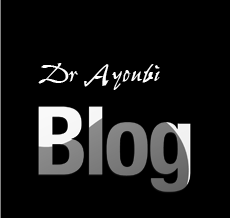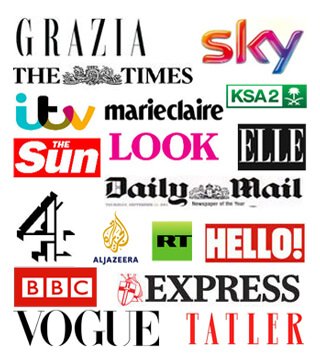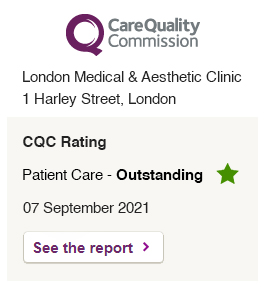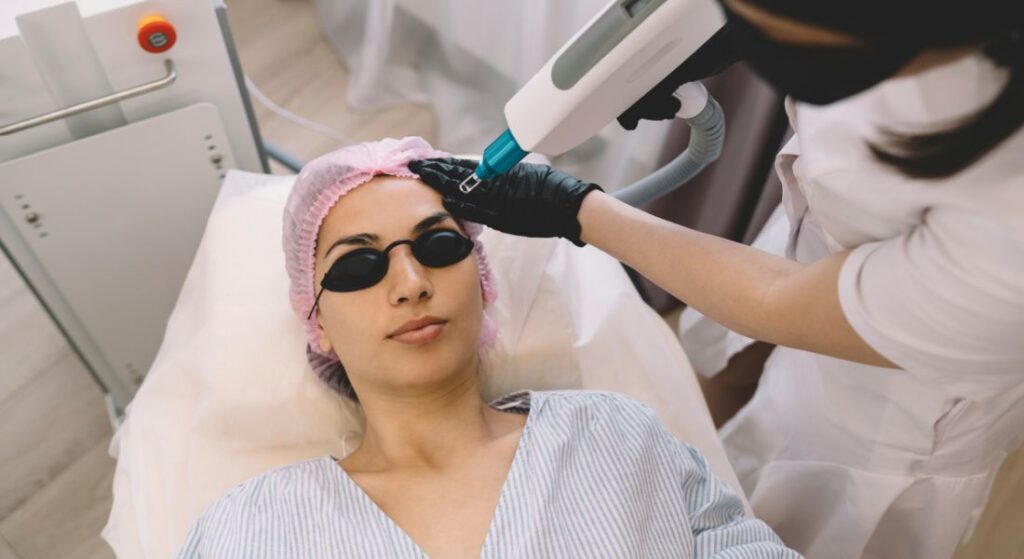
If you’ve ever looked in the mirror and wished you could smooth away wrinkles, soften scars, or restore a fresh glow to your skin, chances are you’ve come across CO2 laser resurfacing. It’s often described as one of the most effective anti-ageing treatments available today.
But does CO2 laser resurfacing really work, or is it just another cosmetic trend? The truth is somewhere in between. While it isn’t a miracle cure, the science behind it is solid, and the results can be impressive when done by the right hands.
In this article, I’ll walk you through exactly how CO2 laser resurfacing works, what conditions it can treat, what results you can expect, and who is and isn’t a good candidate for it. By the end, you’ll have a clear picture of whether this treatment could be the right choice for your skin.
What Is CO2 Laser Resurfacing?
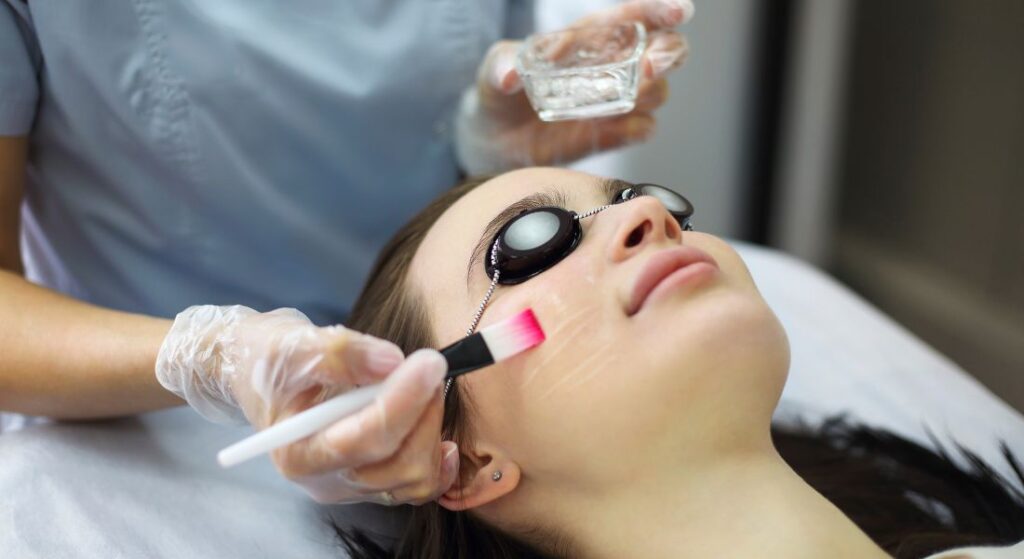
CO2 laser resurfacing is a medical-grade skin rejuvenation treatment that uses targeted beams of light to remove damaged layers of skin. While facials and creams work only on the surface, CO2 laser resurfacing goes deeper to trigger your body’s natural healing process
It works by creating controlled micro-injuries in the skin. As your skin repairs itself, it produces more collagen the protein that gives skin its firmness and elasticity. The result is smoother, tighter, and healthier-looking skin over time.
It’s like giving your skin a ‘reset button’ without surgery.
If you’ve been frustrated with creams that don’t seem to deliver lasting results, this treatment could be the boost your skin has been waiting for. It’s a way to refresh your complexion and help you feel more confident in your own skin.
The Science Behind CO2 Laser Technology
The CO2 laser works by emitting a highly specific wavelength of light that’s readily absorbed by water in your skin cells. Since skin is largely made up of water, the laser can target and vaporise extremely thin layers of tissue with impressive precision. This controlled process allows doctors to treat damaged areas without affecting the surrounding skin.
There are two main types of CO2 laser resurfacing you might come across:
Ablative CO2 Laser: This approach removes the outermost layers of skin, encouraging your body to grow fresh, healthier skin in its place. It’s particularly effective for deeper wrinkles and more noticeable skin concerns.
Fractional CO2 Laser: Instead of treating the entire surface, this method creates tiny micro-columns of damage while leaving surrounding tissue untouched. Because more of your skin is left intact, recovery tends to be faster and less uncomfortable.
Both approaches share the same goal: to stimulate collagen production. Collagen is the protein that gives your skin firmness, structure, and elasticity. By encouraging your body to make more of it, CO2 lasers help reduce fine lines, improve texture, and give your skin a smoother, more youthful appearance.
Fractional CO2 treatments have become especially popular in recent years. They strike a nice balance between delivering noticeable results and minimising downtime making them a go-to option if you want effective rejuvenation without taking too much time off from your routine.
What Skin Concerns Can It Treat?
CO2 laser resurfacing is a versatile treatment that can tackle multiple skin issues at once. Unlike basic facials or over-the-counter creams, it goes deeper to target the root of the problem. You might find it especially helpful if you’re dealing with:
Fine lines and wrinkles particularly those stubborn ones around the eyes and mouth that tend to deepen with age.
Sun damage including rough patches, pigmentation, and uneven skin caused by years of UV exposure.
Acne scars or surgical scars which often leave behind texture irregularities that don’t fade with time.
Enlarged pores that stay visible despite your best efforts with skincare products.
Age spots and uneven tone giving your skin a dull, tired look.
Mild skin laxity such as looseness around the face, neck, or jawline.
If you’ve tried creams, serums, or gentler treatments without much success, CO2 laser resurfacing can often deliver the kind of visible, lasting results you’ve been waiting for. It’s like stepping up to a more advanced level of skin rejuvenation when the basics just aren’t enough anymore.
Does It Really Work?
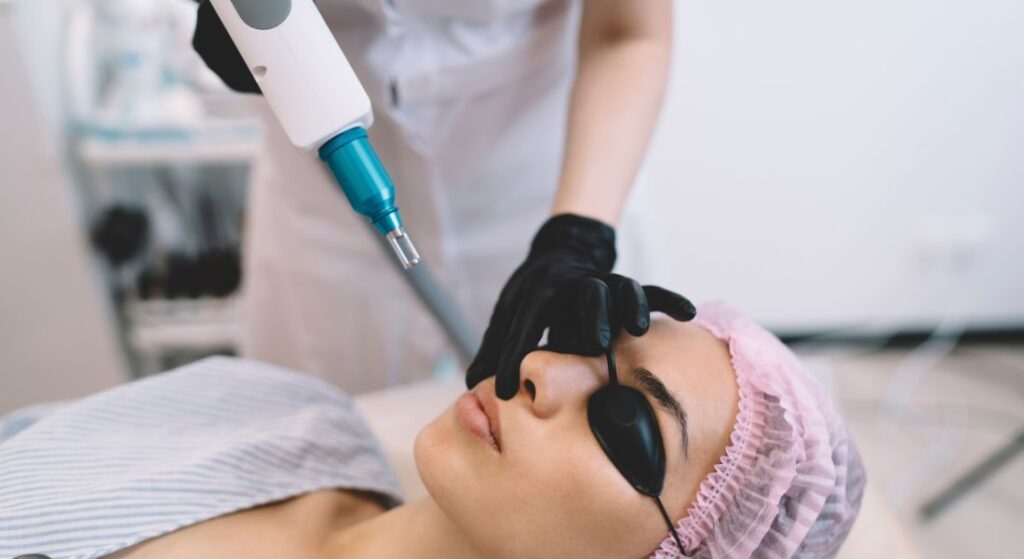
The short answer is yes CO2 laser resurfacing does work. But like most advanced treatments, your results will depend on factors such as your skin type, the concern you’re treating, and, most importantly, the skill of the practitioner performing the procedure.
Clinical studies and countless patient experiences back this up. Improvements in wrinkles, pigmentation, scars, and overall texture have been well documented. In fact, many people notice their skin feels smoother and looks more radiant just a few weeks after treatment. And because the laser stimulates collagen production, the results continue to build over several months, giving you gradual, natural-looking improvements.
That said, it’s not a magic “one-and-done” fix. If your concerns are more severe like deep wrinkles or significant scarring you may need multiple sessions to get the best outcome. Aftercare also plays a big role in how well your skin heals and how long your results last. Think of it as a long-term investment in your skin’s health, rather than a quick, temporary fix.
What Results Can You Expect?

Results from CO2 laser resurfacing aren’t instant, but most people begin to notice changes fairly quickly. The exact outcome will vary depending on your skin type, the issue being treated, and how consistent you are with aftercare but here’s a general idea of what you can expect:
Early improvements (4–6 weeks): Your skin often feels smoother, fine lines begin to soften, and your overall tone looks more even. This is when you’ll first notice that healthy “glow” returning.
Medium-term results (2–6 months): As collagen production ramps up, wrinkles become less noticeable, scars fade, and your skin looks firmer and more refined. Many people say this stage feels like their skin is gradually “turning back the clock.”
Long-term benefits (12 months and beyond): With the right skincare routine and daily sun protection, results can last for several years. Your skin continues to benefit from the collagen boost long after the treatment itself.
Of course, no treatment can stop the natural ageing process. Over time, you may choose to have maintenance or touch-up sessions to keep your skin looking its best. Think of CO2 laser resurfacing as a way to reset and refresh your skin, with the option to fine-tune results in the future if needed.
Who Is a Good Candidate?
You might be a good candidate for CO2 laser resurfacing if your skin and health meet certain criteria. Generally, people who benefit most are those who:
Have fair to medium skin tones – darker skin tones can be treated, but there’s a higher risk of temporary or permanent pigmentation changes.
Are in good overall health – any conditions that affect healing, like uncontrolled diabetes or certain skin disorders, may make the treatment less suitable.
Have specific concerns – such as wrinkles, sun damage, acne or surgical scars, or uneven texture.
Have realistic expectations – CO2 laser can make a noticeable difference, but it won’t deliver perfect, flawless skin overnight.
If you’re thinking about trying CO2 laser resurfacing in London, a consultation is the best first step. A qualified practitioner can assess your skin type, review your medical history, and help you decide whether this treatment is the right fit for your goals.
Who Should Avoid CO2 Laser Resurfacing?
CO2 laser resurfacing isn’t suitable for everyone, and there are certain situations where it’s better to hold off or consider alternatives. You may be advised against the treatment if:
You have very dark skin – the risk of hyperpigmentation or uneven skin tone is higher, which could lead to unwanted discoloration after treatment.
You’re prone to keloid scarring – CO2 laser stimulates healing, which in some cases can trigger abnormal scar formation.
You have active acne, cold sores, or infections in the treatment area – treating inflamed or infected skin can worsen these conditions and interfere with proper healing.
You’re pregnant or breastfeeding – while the laser itself isn’t systemic, most clinicians prefer to postpone treatment until after pregnancy and nursing for safety.
You’ve taken isotretinoin (Accutane) in the past year – this medication affects skin regeneration and increases the risk of complications.
You have certain medical conditions – autoimmune disorders or medications that affect healing may make CO2 laser resurfacing unsafe.
Before any treatment, your clinician will conduct a thorough assessment of your medical history and skin type. This ensures the procedure is safe, minimises risks, and helps set realistic expectations so you can achieve the best possible results.
Even if CO2 laser isn’t right for you, your practitioner can often suggest alternative treatments such as gentler resurfacing lasers, chemical peels, or microneedling that may still give your skin a noticeable refresh.
The Treatment Process
CO2 laser resurfacing follows a clear step-by-step process, so you’ll know what to expect from start to finish:
Consultation: Your clinician will carefully examine your skin and review your medical history. This helps identify your concerns, choose the right laser settings, and ensure the treatment is safe for you.
Preparation: To keep you comfortable, a numbing cream or local anaesthetic is applied to the treatment area. This helps minimise discomfort during the procedure.
Procedure: The laser is gently passed over the targeted skin. Depending on the size of the area, this usually takes between 30 and 90 minutes. The laser works by creating controlled micro-injuries that stimulate your skin’s natural healing process.
Aftercare: Following treatment, you can expect redness, swelling, and peeling for several days as your skin heals. Using moisturisers and strict sun protection is essential to protect your new skin and support recovery.
Recovery times differ depending on the intensity of your treatment. Most people feel ready to return to work and their usual activities within roughly a week, although individual healing times may be slightly shorter or longer. Think of this process as giving your skin a short break to reset and renew itself.
Risks and Side Effects
Like any medical procedure, CO2 laser resurfacing comes with some risks and potential side effects. Most are temporary and manageable, especially when the treatment is performed by an experienced professional. Common effects include:
Redness and swelling – these usually last a few days but can occasionally persist a little longer depending on the intensity of your treatment.
Temporary pigmentation changes – some people experience hyperpigmentation (darkening) or hypopigmentation (lightening) in the treated areas, which generally improves over time.
Infection – although rare, infections can occur if aftercare instructions aren’t followed carefully. Keeping the skin clean and moisturised is essential.
Scarring – this is uncommon, but deeper treatments carry a slight risk, especially in those prone to abnormal scarring.
Choosing a qualified and experienced practitioner significantly reduces these risks. Following post-treatment instructions carefully including sun protection, moisturisation, and avoiding picking at peeling skin helps ensure your results are safe, effective, and long-lasting.
How Does It Compare to Other Treatments?
You may be wondering if CO2 laser resurfacing is better than alternatives like chemical peels or microneedling.
Chemical peels: More affordable but less effective for deep wrinkles or scars.
Microneedling: Good for collagen stimulation but requires multiple sessions for visible change.
Radiofrequency treatments: Non-invasive with no downtime but often deliver milder results.
CO2 laser resurfacing sits at the higher end of effectiveness, but also comes with longer recovery compared to lighter treatments.
How to Maximise Results
If you decide to go ahead, you can enhance your results by:
– Following pre-treatment advice, like stopping retinol or exfoliants a week before.
– Staying hydrated and maintaining a healthy diet to support healing.
– Using medical-grade skincare recommended by your clinician.
– Applying high-factor sunscreen daily, as your skin will be extra sensitive to UV damage.
Cost Considerations
The cost of CO2 laser resurfacing can vary quite a bit depending on factors like the area being treated, the clinic you choose, and how many sessions you need to achieve your desired results. While it isn’t the most budget-friendly option, many people see it as a worthwhile investment because the results tend to last longer than those from creams, peels, or other non-invasive treatments.
If cost is a concern, it’s worth asking your clinic about flexible options. Some offer treatment plans or a staged approach, allowing you to spread sessions over time while still working toward the best results. Thinking of it this way, you can balance both your budget and your skin goals without compromising on safety or effectiveness.
FAQs for CO2 Laser Resurfacing:
1. How does CO2 laser resurfacing work?
CO2 laser resurfacing uses a precise wavelength of light absorbed by water in your skin cells. This allows the laser to remove thin layers of damaged tissue with accuracy. The process creates controlled micro-injuries that trigger your body’s natural healing response, boosting collagen production. Over time, this results in smoother, firmer, and more youthful-looking skin.
2. Is the procedure painful?
Most patients feel minimal discomfort thanks to topical or local anaesthetic applied before the procedure. Some warmth or tingling may be experienced during treatment, but it is generally well tolerated. After the session, you might feel mild soreness, similar to a sunburn, which can be managed with recommended aftercare and soothing products.
3. How long does the treatment take?
The procedure typically lasts between 30 and 90 minutes, depending on the size of the area being treated and whether it is a fractional or full ablative session. During your consultation, Dr Ayham Al-Ayoubi will provide a more accurate time estimate based on your personalised treatment plan.
4. How many sessions will I need?
The number of sessions varies depending on your skin concerns and desired results. Some patients see noticeable improvement after a single session, especially with fractional CO2 laser. More significant issues, like deep wrinkles or extensive scarring, may require multiple sessions spaced several weeks apart for optimal results.
5. What is the recovery time?
Most patients find that their skin recovers enough to resume daily activities within about a week, though deeper treatments may take a little longer for full healing. During this time, redness, swelling, and peeling are common. Proper aftercare, including moisturisers and high-factor sun protection, is crucial to support healing and prevent complications.
6. Are there any side effects or risks?
Temporary redness, swelling, and mild discomfort are normal. Other potential side effects include hyperpigmentation or hypopigmentation, infection if aftercare isn’t followed, and, rarely, scarring. Choosing an experienced practitioner like Dr Al-Ayoubi at the London Medical & Aesthetic Clinic significantly reduces these risks.
7. Who is a suitable candidate for CO2 laser resurfacing?
Ideal candidates typically have fair to medium skin tones, are in good overall health, and are seeking treatment for wrinkles, sun damage, or scarring. Realistic expectations are important the goal is improvement, not perfection. During your consultation, Dr Al-Ayoubi will assess your skin and medical history to determine suitability.
8. Who should avoid CO2 laser resurfacing?
This treatment may not be suitable for people with very dark skin, a history of keloid scarring, active acne or infections in the treatment area, pregnancy or breastfeeding, or recent isotretinoin use. A thorough assessment by Dr Al-Ayoubi ensures that the procedure is safe for each patient.
9. How long do results last?
Results vary depending on age, lifestyle, and skin condition. Many patients enjoy long-lasting benefits for several years when they follow proper skincare routines and protect their skin from sun exposure. Touch-up sessions may be recommended over time to maintain the effect.
10. Can CO2 laser resurfacing be combined with other treatments?
Yes, combining CO2 laser resurfacing with treatments like dermal fillers, PRP (platelet-rich plasma), or targeted skincare can enhance overall results. At the London Medical & Aesthetic Clinic, Dr Ayham Al-Ayoubi often recommends personalised combinations to address multiple concerns at once, helping patients achieve smoother, firmer, and more radiant skin.
Final Thoughts: Is CO2 Laser Resurfacing Right for You?
CO2 laser resurfacing is a highly effective, medical-grade option for rejuvenating your skin. Whether your goal is to smooth wrinkles, fade scars, or restore a more even and radiant complexion, this treatment can deliver noticeable, long-lasting results when performed by an expert.
At the London Medical & Aesthetic Clinic, Dr Ayham Al-Ayoubi leads our team of specialists, providing personalised treatment plans tailored to your skin type, concerns, and goals. If you are considering CO2 Laser Treatment in London, booking a consultation with Dr Al-Ayoubi is the best way to ensure safe, precise, and beautifully refreshed results that suit your individual needs.
References:
1. Petrov, A. (2016). Efficiency of Carbon Dioxide Fractional Laser in Skin Rejuvenation. Journal of Cosmetic and Laser Therapy, 18(2), 91–95. Available at: https://pmc.ncbi.nlm.nih.gov/articles/PMC4908744/
2. Majid, I., et al. (2015). Efficacy and Safety of Fractional CO₂ Laser Resurfacing in the Management of Non-Hypertrophic Traumatic and Burn Scars. Journal of Cosmetic Dermatology, 14(4), 296–300. Available at: https://pmc.ncbi.nlm.nih.gov/articles/PMC4645146/
3. Peng, W., et al. (2021). The Efficacy and Safety of Fractional CO₂ Laser Therapy in the Treatment of Burn Scars: A Systematic Review and Meta-Analysis. Journal of Dermatological Treatment, 32(5), 557–563. Available at: https://www.sciencedirect.com/science/article/pii/S0305417921002291
4. Wu, X., et al. (2025). An Effective and Safe Laser Treatment Strategy of CO₂ Ablative Fractional Laser for Static Periorbital Wrinkles in Chinese Population. Lasers in Medical Science, 40(2), 1–9. Available at: https://link.springer.com/article/10.1007/s13555-025-01404-3
5. Haykal, D., et al. (2024). Advancements in Laser Technologies for Skin Rejuvenation: A Review of Current Modalities and Future Directions. Journal of Cosmetic Dermatology, 23(1), 1–9. Available at: https://onlinelibrary.wiley.com/doi/10.1111/jocd.16514

